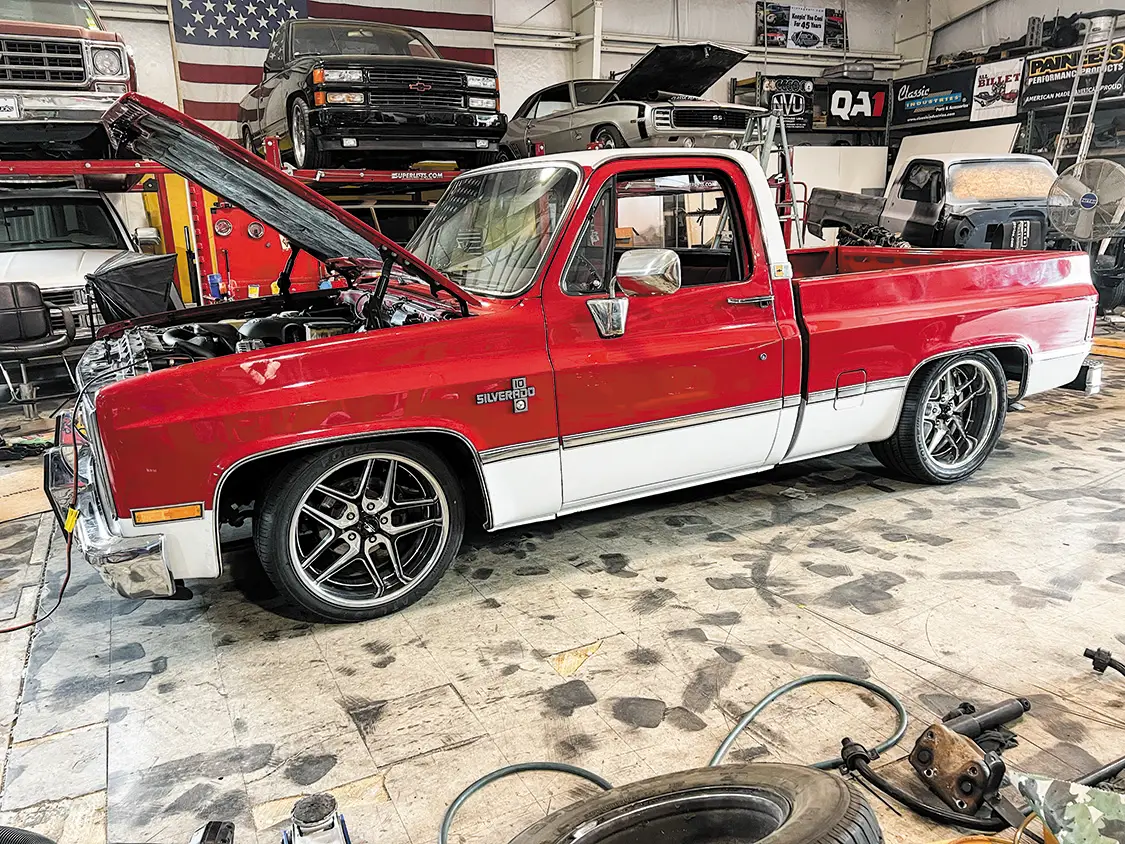 STREET TRUCKS STAFF
.
November 08, 2025
.
Industry News
.
STREET TRUCKS STAFF
.
November 08, 2025
.
Industry News
.

Whether you’ve kept it purely classic or opted for next-level customization, you’ve invested time and money in making your truck your pride and joy. Your investment deserves to be protected, and this requires a bit more than ensuring it’s parked safely and securely at night. Protect your ride with these practical tips.
Most standard vehicle insurance policies don’t cover some types of customizations, and specific modifications might void some parts of your coverage. Whether you’re thinking about modifying your truck or have already done so, review your policy so you know where you stand if it’s stolen, vandalized, or you’re involved in an accident.
Check whether you need to report modifications to your insurance provider to maintain coverage, find out whether your policy includes liability coverage in case you damage someone else’s property or vehicle, and, if you use your truck off-road, whether your policy covers vehicle use in areas not maintained by local authorities or the government.
If your current policy doesn’t meet your needs, look for affordable auto insurance that offers:
One of the risks truck enthusiasts take when customizing or modifying their rides is the potentially negative impact of these modifications on a vehicle’s braking performance, handling, and stability. Put safety first by taking precautions that can mitigate potential risks associated with control and handling. The most important precautions to consider for your vehicle include:
Whether your truck is new or a vintage model you’ve given a new lease on life, regular maintenance is vital. There are two approaches you can take: follow the manufacturer’s recommended service schedule or create your own.
Whichever approach you choose, it should include regular inspections of components and systems, such as brakes, tires, lights, and electronics. Additionally, it should involve checks and changes of brake fluid, transmission fluid, coolant, and other necessary fluids. Lastly, you need to do oil changes (usually every 5,000 to 7,500 miles).
Research your state’s laws governing modifications such as lift kits, lighting, and tire size before making any changes to your truck. The last thing you need is to be banned from using public roads after spending time, money, and effort on your mods.
Some important considerations to remember:
This should go without saying, but some truck owners are happy to skip wash days. Don’t give in to this temptation, as washing your ride regularly helps protect it from rust, corrosion, and deterioration by removing substances such as salt and dirt. If road salt is used in your area in winter, make doubly sure you clean your truck’s undercarriage thoroughly.
When cleaning the interior, use cleaners and conditions specially developed for car seats, dashboards, and other surfaces. Protect your vehicle’s exterior from environmental damage by applying vehicle wax or another protective coating after washing and drying it.
Pay attention to early warning signs of issues that could become bigger, more expensive issues to resolve. Don’t ignore grinding, squeaking, or other noises that could indicate there’s a problem with components or systems, such as your truck’s brakes or suspension. If any warning lights on your dashboard light up, investigate them immediately.
Address any issues you find as soon as possible, using the best quality parts you can afford. If you can’t make the repairs yourself, entrust your vehicle to a mechanic with an excellent reputation for working on customized or modified trucks. Choosing quality parts and service is one of the best ways to prolong your truck’s lifespan and reduce the chances of repeat repairs.
The thing about emergencies is that you never know when you’re going to find yourself in one, so make sure you’re prepared. Whether you’re enjoying a bit of inter-city traveling or going on an off-road adventure, ensure you have recovery gear with you. This should include tools such as a Hi-Lift jack, traction boards, and a winch.
You should also travel with communication devices, especially if you drive in remote areas. Sometimes, a mobile phone doesn’t cut it, so invest in a two-way radio or satellite phone. Lastly, pack a first aid kit for your long-distance journeys.
Trucks mean different things to different people. For some, they’re a daily workhorse that gets them from A to B or plays a vital role in their livelihoods. For others, they’re a trusty companion on adventures that take them across the country. Whatever your truck means to you, give it the TLC it needs, and it’ll still be your pride and joy a few decades from now.
Meta Title: Practical Tips To Protect Your Truck | Street Trucks Mag
Meta Description: Your truck is an investment that deserves to be protected. Find out how to keep it in excellent condition and prolong its lifespan with practical tips.
Share Link